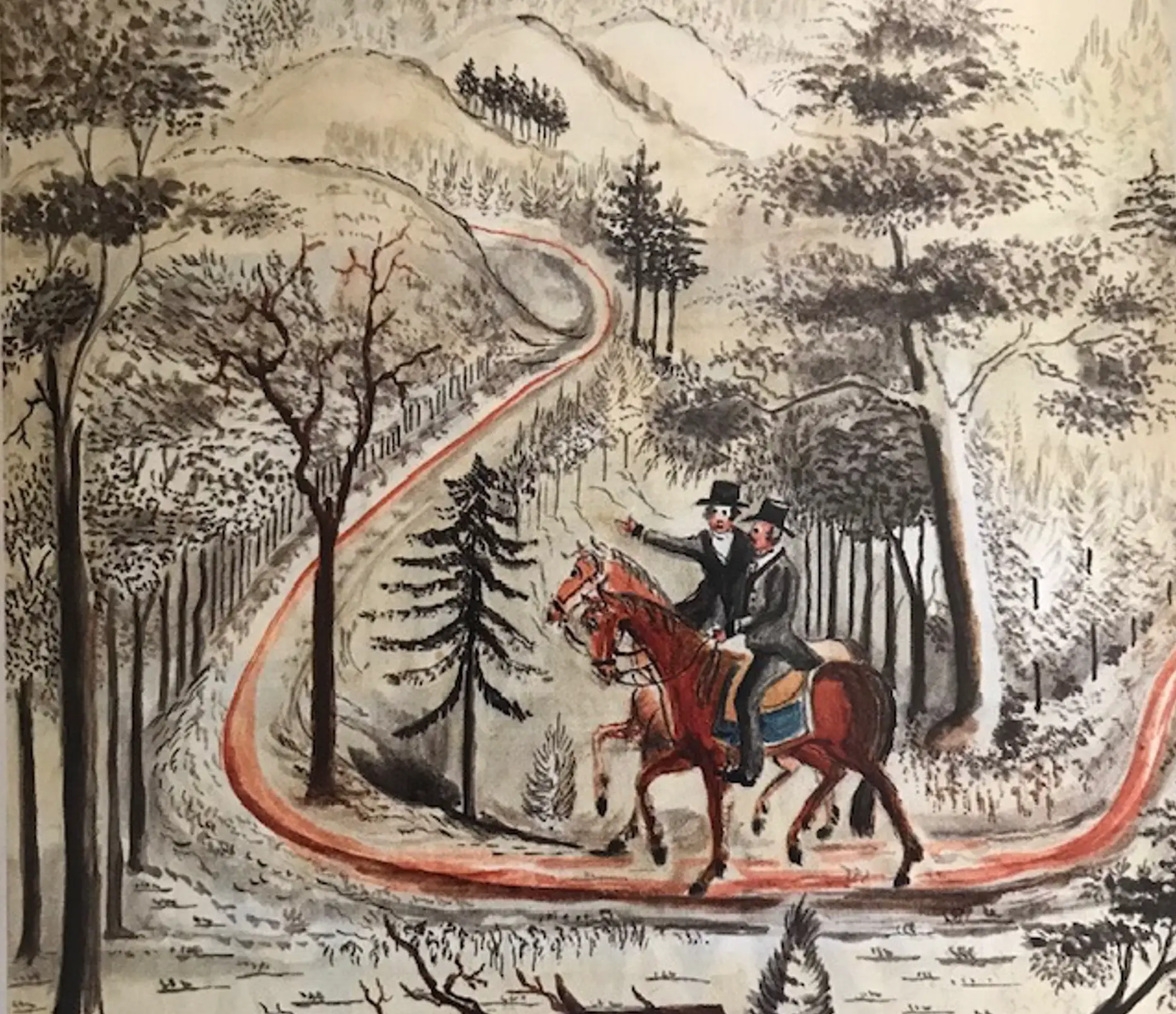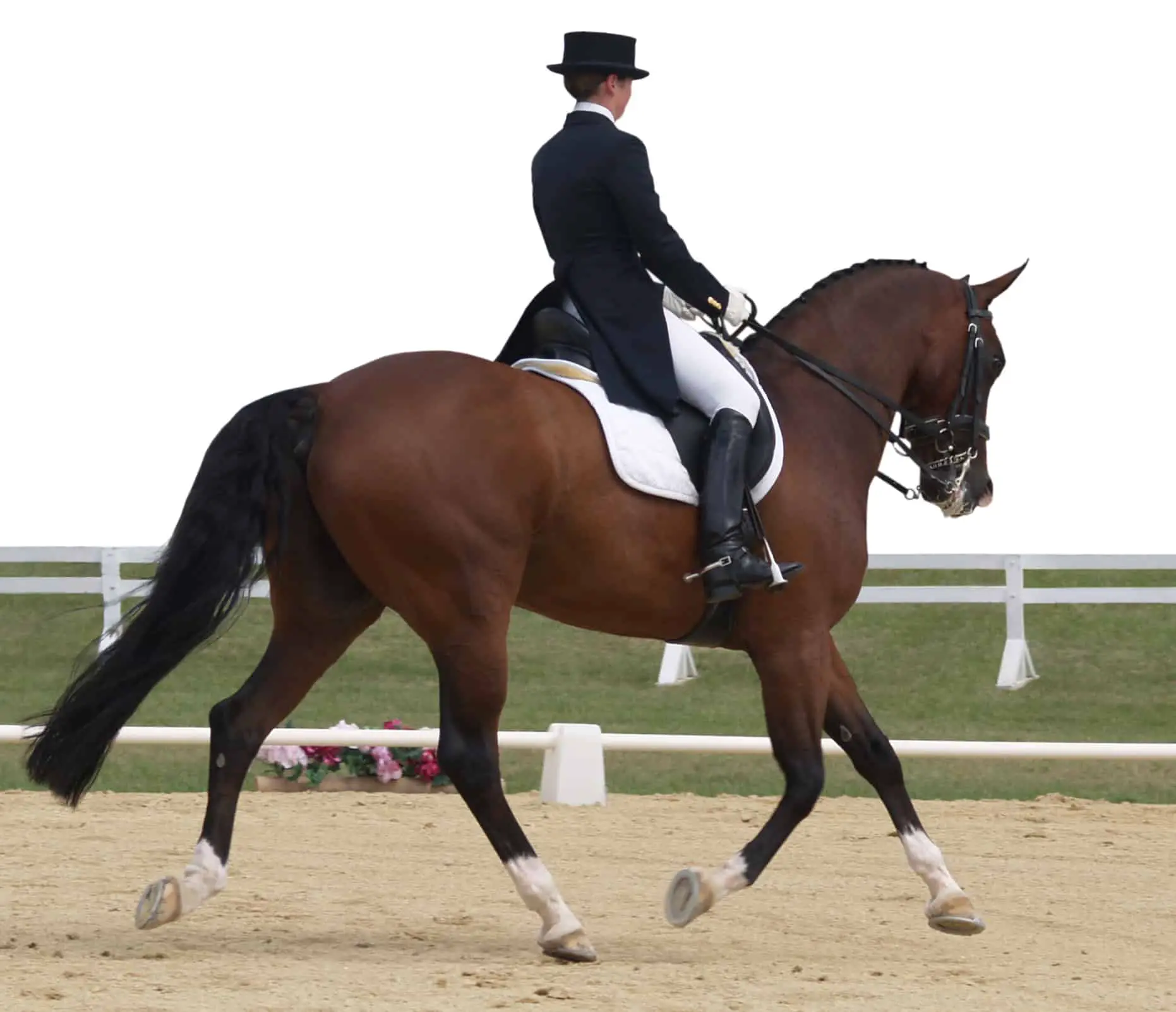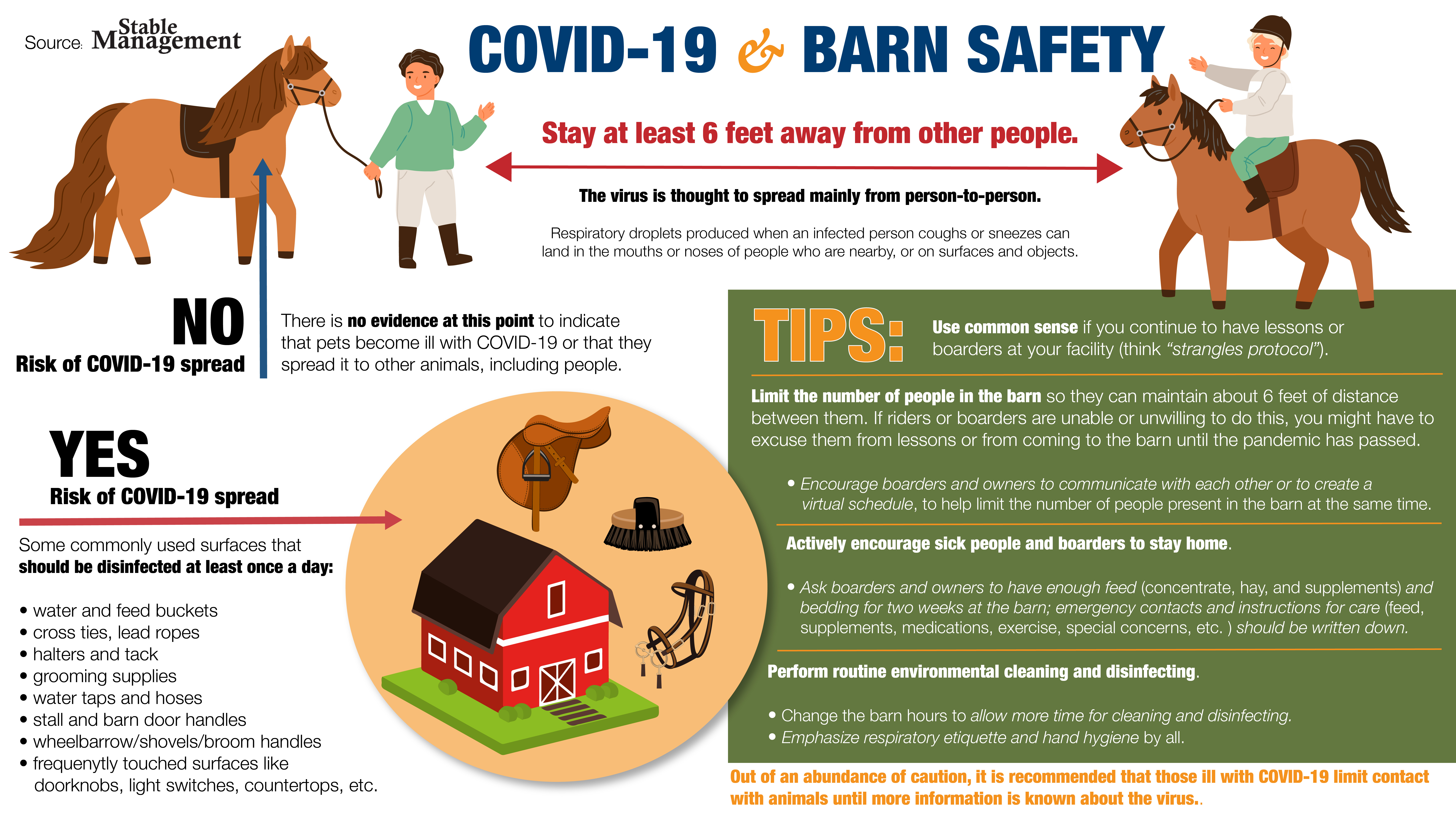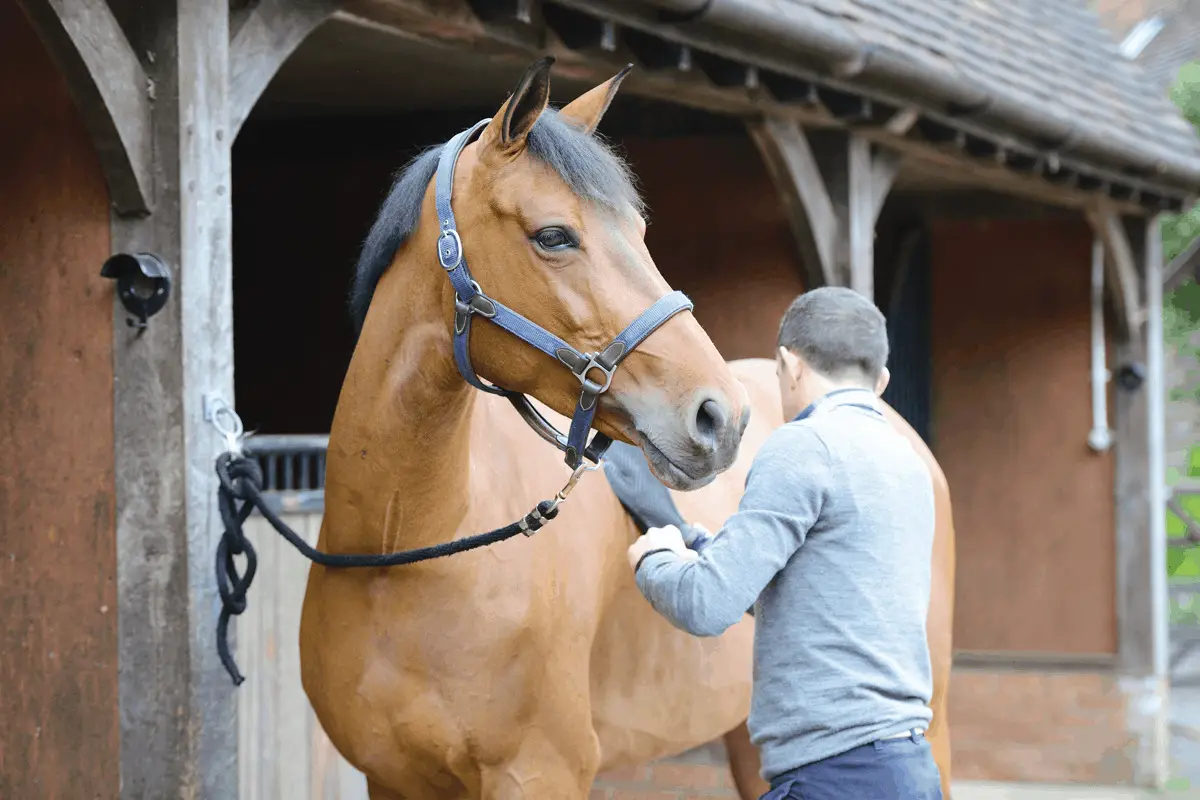Horses have been a source of transportation and companionship for humans for centuries. Riding horses is a popular activity for many, but there are certain considerations to take into account before doing so. In this article, we will discuss how old a horse needs to be before it can be ridden.
History of Horse Riding

Horse riding has been a part of human history since the dawn of civilization. The earliest evidence of horse riding dates back to the Bronze Age, around 4,000 years ago in the Eurasian Steppes.
The use of horses for transportation and warfare was essential to the development of ancient civilizations, and horses and horsemanship are thought to have played a major role in the development of cultures around the world.
Horse riding has evolved over time, from the early riding styles of nomadic and pastoral cultures, to the more modern sports of eventing, dressage, and show jumping.
- Ancient Horse Riding
- Nomadic and pastoral cultures
- Roman Empire and chariot racing
- Mongolian Empire and cavalry warfare
- Modern Horse Riding
- Eventing, dressage, and show jumping
- Polo and other equestrian sports
- Western riding and horseback riding as leisure activities
Today, horse riding is enjoyed by people of all ages and skill levels, from recreational riders to professional athletes. Whether you’re taking a leisurely trail ride or competing in a prestigious event, horse riding is a centuries-old pastime that has captivated generations of riders.
Types of Horse Riding

Horse riding is a fun and rewarding activity that can be enjoyed by people of all ages. There are many different types of horse riding, each with its own challenges and rewards.
- English Riding – English riding is a style of riding that involves riding in a saddle, often with a dressage-style seat. Riders use the reins and leg aids to control their horse and perform a variety of movements. English riding disciplines include dressage, show jumping, eventing, and hunt seat.
- Western Riding – Western riding is a style of riding that focuses on control of the horse with the use of a bridle, reins, and the rider’s legs. This style of riding is used in a variety of disciplines, including reining, barrel racing, and western pleasure.
- Trail Riding – Trail riding is a fun and enjoyable way to explore the outdoors with your horse. Riders will often take their horses on trails through forests, mountains, and other natural settings. Trail riding is a great way to get to know your horse and bond with them.
- Endurance Riding – Endurance riding is a sport in which riders will compete in a race to see who can complete a long-distance ride in the least amount of time. Riders must be in good physical condition and have a horse that is in good condition to complete the race.
- Jumping – Jumping is a type of equestrian sport in which riders and horses compete in a variety of jumping events. Riders must have excellent balance and control of their horses to successfully complete the course. Jumping is an exciting and thrilling sport to participate in.
Safety Considerations

When it comes to horseback riding, safety should always be a top priority. Before deciding to start riding a horse, it is important to understand the potential risks involved and take every necessary precaution to ensure a safe and enjoyable experience.
When it comes to the age of a horse, it is generally recommended that a horse should be at least four years old before being ridden. Younger horses may be trained to accept a rider, but the physical development of a horse under four years of age may not be strong enough to support a rider. Additionally, their temperament may not be suitable, as younger horses may be more easily startled, making them a potential risk for riders.
Before riding any horse, it is important for the rider to meet the horse and become familiar with its behavior. The rider should also be aware of any medical conditions the horse may have that could affect its ability to carry a rider safely. Horse owners should also ensure that the horse is in good physical condition by having it checked by a veterinarian.
It is also important for the rider to have the proper riding gear, including a riding helmet, riding boots, and a properly fitting saddle. A qualified riding instructor should be consulted for advice on the best riding techniques and how to handle the horse safely.
Finally, it is important to ensure that the horse is properly trained and that the rider is knowledgeable and comfortable with the horse and its behavior. Taking the time to ensure these safety considerations is essential for a safe and enjoyable horseback riding experience.
Age Requirements

It is a common misconception that horses must be two years old before they can be ridden. While a two-year-old horse may be physically able to carry a rider, it is not always recommended.
For a safe and successful riding experience, the horse should be at least three or four years of age. At this age, the horse’s body is physically developed enough to handle the work. Additionally, the horse has had enough time to learn about its environment and to become accustomed to the presence of people.
The following is a list of age requirements for different types of activities:
- Leisure riding: 3-4 years of age
- Competition: 4-5 years of age
- Jumping: 5-6 years of age
- Cross-country: 6-7 years of age
- Endurance: 7-8 years of age
It is important to note that each horse is an individual and should be evaluated on its own merits. It is also important to remember that no matter what the horse’s age is, it should always be treated with kindness and respect.
Training and Preparation

Before a horse can be ridden, it must undergo a process of training and preparation. This process should start when the horse is a young age and can involve the following steps:
- Desensitization: This involves teaching the horse not to be spooked by objects, sounds, and movements. This is an important step in ensuring the horse is safe to ride.
- Groundwork: This involves teaching the horse basic commands such as stop, go, turn, and back up. It also involves teaching the horse to accept a rider on its back.
- Riding: This involves teaching the horse to accept a rider on its back and to respond to commands when ridden.
- Conditioning: This involves gradually increasing the intensity of the horse’s exercise. This helps to ensure the horse is physically fit and able to handle the demands of riding.
The amount of time and effort involved in training a horse will depend on the horse’s age, breed, and individual personality. Generally, it is recommended that a horse should be at least two to three years old before it is ridden. However, some horse breeds may require more time for training and preparation before they are ready to be ridden.
How Old Should a Horse Be to Start Riding?

When it comes to how old a horse should be to start riding, there is no one-size-fits-all answer. The age at which a horse is considered ready to ride can range from as young as two years old to as old as four or five.
In general, the younger a horse is, the less likely it is to have the physical and emotional maturity to start riding. Horses develop at different rates, so it is important to evaluate each horse individually before deciding when they are ready to ride.
For young horses, the best way to determine if they are ready to ride is to look at their physical development. The horse should have developed strong, muscular hindquarters and be able to carry a rider’s weight. The horse should also have some basic training such as being able to lead, turn, and stop.
In addition to physical maturity, it is important to assess the horse’s emotional maturity. Young horses may be more prone to spooking or bolting if they feel scared or overwhelmed. It is important to look for signs of fear or anxiety and work to gradually introduce the horse to new experiences and scenarios.
Ultimately, the best way to determine if a horse is ready to ride is to consult an experienced horse trainer or veterinarian. They can assess the horse’s physical and emotional maturity and provide guidance on when the horse is ready to start riding.
When Can a Horse Be Ridden
When it comes to riding horses, there are a few factors to consider before hopping on. Horses can be ridden as early as six months old, but it is important to ensure that the horse is physically and mentally ready for the task.
- Age: Generally, horses can be ridden at six months of age, however, this may vary depending on the individual horse.
- Size: The size of the horse is also important to consider when determining when a horse is ready to be ridden. Smaller horses tend to be ready earlier than larger horses.
- Mental Maturity: In addition to age and size, it is important to assess the horse’s mental maturity. A horse must be comfortable with and familiar with humans before it is ready to be ridden.
- Physical Maturity: The horse’s physical maturity is also important in determining when it is ready to be ridden. A horse should be physically fit and ready to take on the physical strain of riding.
Therefore, it is important to take all of these factors into consideration when deciding when a horse can be ridden. Ultimately, a professional trainer or veterinarian is the best person to assess the horse and make a decision about when it is ready to be ridden.
Frequently Asked Questions
1. How can I tell if my horse is old enough to ride?
It is important to determine if a horse is old enough to be ridden before attempting to do so. Generally, the age of a horse should be the first indicator of whether or not the horse is ready to be ridden. The age at which a horse is considered “old enough” to be ridden depends on its breed, size, and other factors.
In general, a horse should be at least three years old before being ridden. However, this can vary depending on the breed and size of the horse. Some breeds, such as ponies, may be ready to be ridden earlier, while larger horses may not be ready until they reach four or five years of age. It is best to consult with a veterinarian or experienced horse trainer to determine when a horse is ready to be ridden.
In addition to age, there are several other factors to consider when determining if a horse is old enough to ride. These include the horse’s physical condition, mental maturity, and emotional stability. A horse should be in good physical health and have no physical issues that could be exacerbated or created by riding.
Mental maturity is important in determining if a horse is ready to be ridden. A horse should have a good understanding of basic commands and be able to respond to them. A horse should also be emotionally stable and not display any signs of fear or anxiety when around riders and equipment.
Finally, the horse’s attitude and willingness to work should be taken into account when determining if a horse is old enough to ride. A horse should be willing to work and respond to commands without any hesitation or resistance. If a horse is displaying any of these behaviors, it is best to wait until it is older before attempting to ride it.
In conclusion, the age of a horse is a good indicator of when it is ready to be ridden. Generally, a horse should be at least three years old before being ridden. However, other factors, such as physical condition, mental maturity, emotional stability, and willingness to work should also be taken into account. It is best to consult with an experienced trainer or veterinarian to determine when a horse is ready to be ridden.
2. What training should I complete before riding my horse?
It is important to ensure that both you and your horse are prepared for riding. You should complete the following training before riding your horse:
- Learn basic horsemanship skills, such as how to handle and groom a horse, how to check the horse’s feet, and how to put on a saddle and bridle.
- Learn how to mount and dismount safely and correctly.
- Learn how to lead your horse correctly and safely.
- Learn how to correctly and safely use the reins, seat and legs to control the horse.
- Learn how to identify and respond to your horse’s signals.
- Learn basic safety procedures, such as what to do in case of an emergency.
- Get familiar with the riding environment, such as the terrain and the type of equipment to use.
It is important to understand that riding any horse requires skill and knowledge. It is important to take the time to complete the necessary training before riding your horse, to ensure both your safety and the safety of your horse.
3. At what age should I begin backing a horse?
It is important to remember that horses are individuals and mature at different rates. Therefore, there is no definitive age at which one should begin backing a horse. However, there are several factors to consider when deciding when to start riding a horse.
- Physical Maturity – Research suggests that a horse should not be backed until it is at least 4 years of age. This is to ensure the horse has developed physically and is mature enough to handle the stress of carrying a rider.
- Mental Maturity – Even if a horse is physically mature, it is important to assess its mental maturity as well. Horses should be patient, trusting and willing to learn before they are backed.
- Rider Ability – Before beginning to back a horse, the rider should have basic knowledge of horsemanship, handling and riding. It is important that the rider understands the basics of horsemanship and is confident in the saddle before attempting to ride the horse.
- Training – Horses should be started in an environment that is as stress-free as possible. It is best to start them with groundwork and basic handling before introducing them to the saddle. This helps to ensure the horse is comfortable and confident.
Ultimately, the decision to back a horse should be made on an individual basis. It is important to assess the horse’s physical and mental maturity, as well as the rider’s ability before beginning to back the horse.
4. How should I prepare my horse to ride?
It is important to ensure your horse is properly prepared for riding. Here are some tips for getting your horse ready for a ride:
- Groom your horse – brush and comb the coat, clean their hooves and check for injuries or rubs.
- Check the tack – make sure the saddle and bridle fit properly and are in good condition. Check the stirrups for wear and tear, and inspect the girth for any signs of damage.
- Check the horse’s feet – examine the feet for any signs of damage, such as cracks, chips or thrush. Have your farrier trim the feet if necessary.
- Warm up your horse – allow your horse to move around and stretch their muscles before you get on. This will help them to be more relaxed during the ride.
- Check the environment – make sure the area you are riding in is safe and free from hazards such as low-hanging branches or deep water.
By following these steps, you can ensure your horse is ready and prepared for a safe and enjoyable ride.
5. What safety measures should I take when riding a horse?
When riding a horse, it is important to take safety measures to reduce the risk of injury. Here are some tips for safe horse riding:
- Always wear a riding helmet that is properly fitted.
- Wear boots with a heel to help you stay in the stirrups.
- Be aware of your horse’s movements and be prepared to react quickly.
- Be aware of your horse’s blind spots, such as its back, head, and sides.
- Start out slow and practice good horsemanship. Make sure the horse is comfortable before increasing speed.
- Avoid riding in unfamiliar territory or in areas with a lot of traffic.
- Be aware of your horse’s body language and be prepared to stop if it appears to be uncomfortable or scared.
- Know your horse’s limits and do not push it further than it can handle.
- If you are a beginner, take lessons from a professional trainer.
By following these safety tips, you can enjoy horse riding while reducing the risk of injury.
Conclusion
The age at which a horse can be ridden depends on the horse, the rider, and the type of riding. Generally speaking, horses should not be ridden until they are at least three years old. However, some horses may be able to start riding at two years old, depending on their breed and the type of riding. Before allowing a horse to be ridden, it is important to consult a veterinarian and a qualified riding instructor. They will be able to assess the horse’s physical and mental maturity to determine if they are ready to begin riding. Overall, the safety of the horse and rider should always be the top priority when deciding when to start riding.



